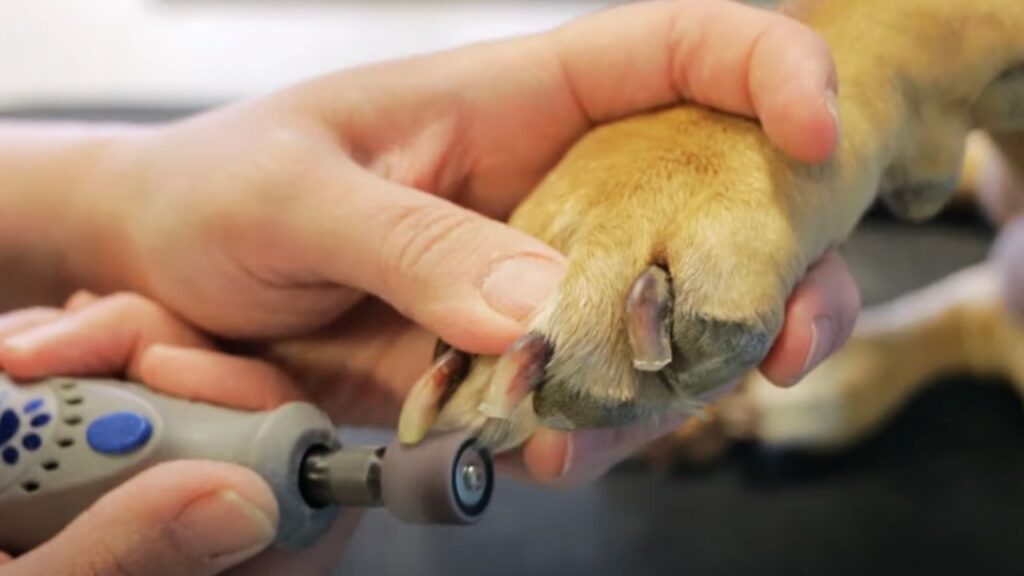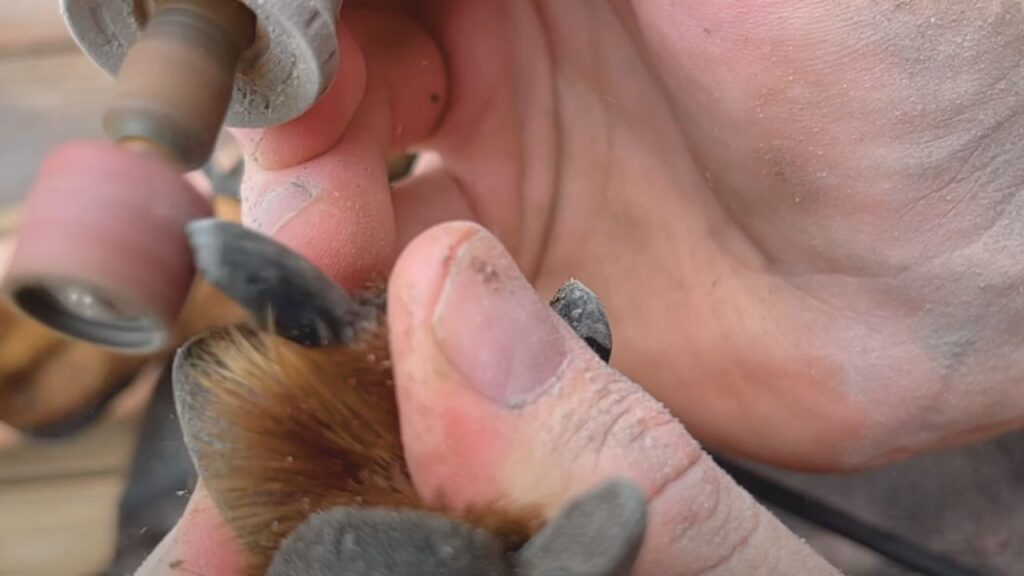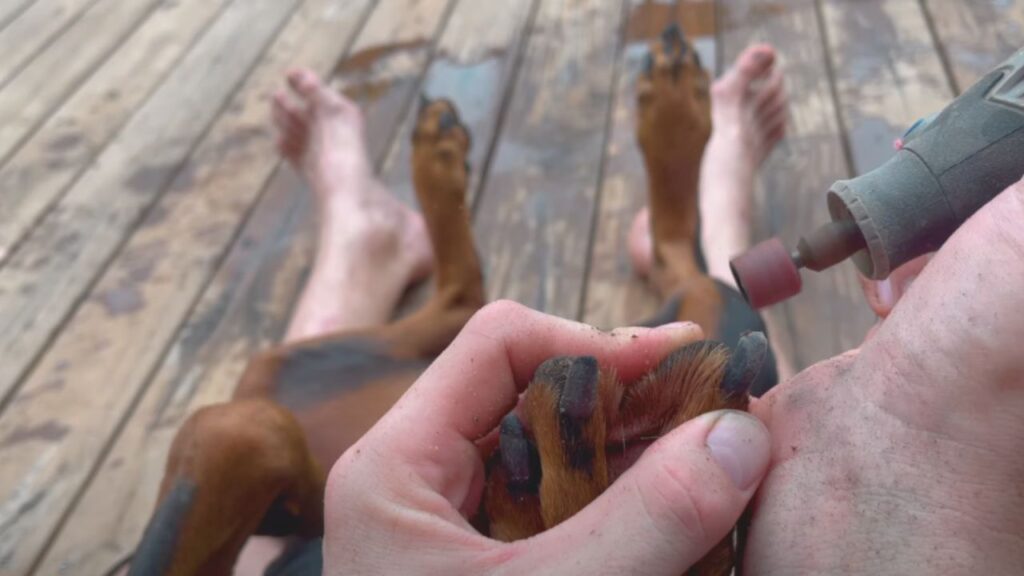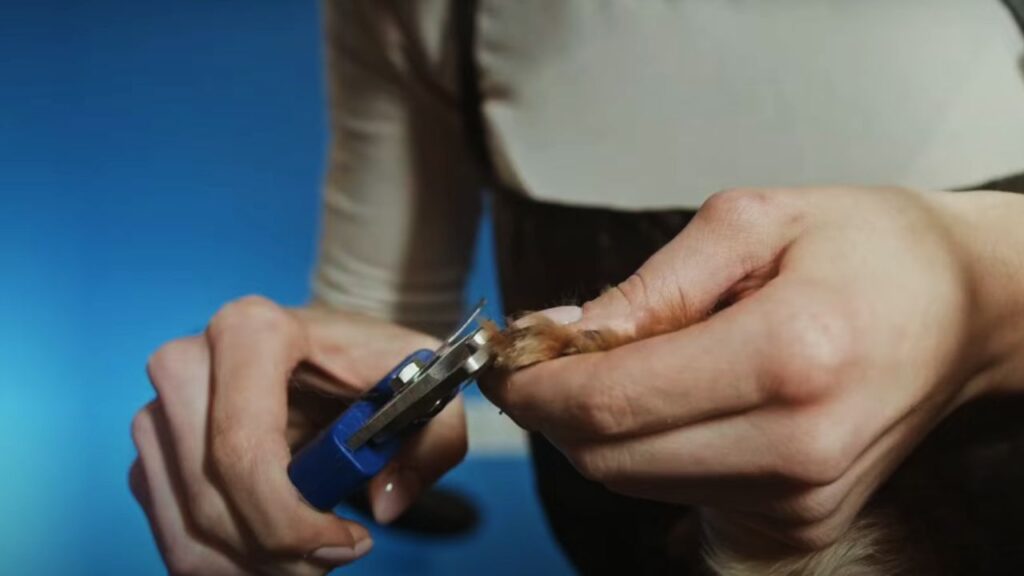As a dog parent, I know how tough it can be to figure out how to keep dog nails short without clipping. Did you know that most dog nails grow around 2-3 millimetres per week? Without regular maintenance, that can add up to painful overgrowth within just a couple of months.
Research says that more than 40% of pet owners struggle with nail maintenance because their dogs get anxious during trimming sessions. Luckily, I’ve found stress-free ways to manage those pesky nails without the stress of clipping!
Quick Look
To keep dog nails short without clipping, use nail grinders to file them down. Regular walks on hard surfaces naturally wear down nails, and scratch pads can help maintain their length. Positive reinforcement and calming products can ease the process for anxious dogs.
Learn how to keep dog nails short without clipping with these simple and stress-free methods.
Are nail grinders effective for keeping dog nails short?

Yes, nail grinders are effective for keeping dog nails short as they file down the nails without the risk of cutting the quick, which can cause pain. These tools offer greater control and precision compared to traditional clippers, making them a great alternative.
Many pet owners find that grinders reduce stress during nail maintenance, especially for dogs that are anxious about having their nails trimmed. Regular use of nail grinders is a great way to keep dog nails short without clipping, helping maintain your dog’s nail health effectively.
Thinking about using baby shampoo on your pet? Discover the pros and cons of using baby shampoo on dogs.
Using Natural Methods to Keep Nails Short
When figuring out how to keep dog nails short without clipping, I’ve found that natural solutions are often the easiest and most enjoyable. By incorporating regular outdoor activities and simple tools into your dog’s routine, you can manage their nail length without stress. Whether it’s a daily walk or a playful dig, these techniques make nail care feel like fun rather than a chore.

1. Daily Walks on Hard Surfaces
Walking your dog on hard surfaces like concrete or asphalt is an easy way to wear down their nails naturally. A walk of at least 30 minutes, five days a week, will make a noticeable difference over time. However, switching to softer ground halfway through each walk is important to prevent joint strain.
2. Supervised Digging for Nail Maintenance
Digging is more than just a fun activity it helps wear down nails just like in the wild. Fifteen minutes of supervised digging can go a long way in keeping nails manageable. If you’re concerned about your lawn, consider setting up a sandbox or digging area in your yard.
3. Using Scratch Boards and Pads Indoors
Scratch boards made from sisal fabric or sandpaper work wonders for maintaining nail length. After just two weeks of short sessions, I noticed my dog’s nails were smoother and shorter. Three 10-minute sessions each week are usually enough, and you can encourage your dog to use the board by rewarding them with treats.
Incorporating these natural methods into your dog’s routine not only keeps nails short but also improves your pet’s physical and mental well-being.
Read more: Need help with a dog’s broken nail? Learn practical tips for treating a dog’s broken nail at home to handle it safely.
Tool-Based Solutions for Trimming Without Clipping
There are many ways to explore how to keep dog nails short without clipping, and tools like grinders, files, and caps have been lifesavers for me. These methods are safer, reduce stress, and avoid the risks of clipping too close to the quick. Let me walk you through what worked best for me and my dog.

Using Nail Grinders for Safe Nail Maintenance
Nail grinders are my go-to solution because they allow precise control. The rotating head helps slowly file down the nail without cutting too deep. After about 3-5 short sessions, my dog became comfortable with the noise, especially with some treats involved along the way.
It’s essential to keep sessions short to prevent overheating, as grinders can heat up after 30 seconds. I also recommend starting with just one nail per session to gradually build your dog’s comfort with the tool.
Filing Nails with an Emery Board
An emery board is a quiet alternative that works perfectly for dogs sensitive to noise. Filing in one direction prevents splitting and keeps the nail edges smooth. I use it every few days to touch up my dog’s nails, and it’s also an affordable option, costing less than $5.
Though it takes longer, I find the results worth it. It’s a gentle, stress-free way to manage nail length, especially if you keep sessions short and consistent.
Handling Thick Nails with Grinders
If your dog’s nails are thick, a manual file won’t cut it—literally. Grinders are much more effective, though it can take 20-30 minutes a week to keep them under control. I also learned to check frequently for heat buildup to avoid discomfort during longer grinding sessions.
The trick is consistency; grinding weekly ensures nails don’t grow too long. Plus, filing regularly keeps your dog’s posture and mobility in check.
Using Nail Caps as a Workaround
For dogs that resist all other methods, nail caps are a great solution. They last 4-6 weeks and prevent damage to furniture or floors while you figure out other nail care strategies. I found it helpful to check them weekly to make sure they stayed snug.
Though caps don’t shorten nails, they buy you some time and keep your dog comfortable. They’re easy to apply, and most dogs adjust to them quickly with positive reinforcement.
Behavioral Techniques to Reduce Anxiety During Nail Maintenance
Maintaining your dog’s nails can be a daunting task, especially if your furry friend is anxious about the process. Understanding how to reduce that anxiety can turn nail care from a stressful ordeal into a bonding experience. Here are some effective behavioral techniques to help your dog feel more comfortable.

- Desensitization: Introduce Tools Gradually:
Begin by introducing the grinder or file without turning it on. Let the dog sniff it and offer treats to build comfort over daily 5-minute sessions. - Gradual Exposure: Turn It On:
Once comfortable, turn the tool on near your dog without using it on their nails. Introduce tools in small steps, maintaining a calm demeanor to ease anxiety. - Positive Reinforcement: Build Trust:
Use treats or extra affection after each session to reinforce positive behavior. This approach builds trust and encourages quicker acclimatization. - Short Sessions: Keep It Manageable:
If resistance persists, focus on short, manageable sessions—consider working on one nail per day to prevent overwhelming the dog. - Calming Products: Ease the Stress:
For highly anxious dogs, try calming products like pheromone sprays to reduce stress during grooming sessions. - Seek Professional Help When Needed:
If challenges continue, consult a professional groomer or veterinarian for guidance. Many groomers offer desensitization programs to facilitate easier nail care.
Troubleshooting Long or Overgrown Nails
In my experience, tackling long or overgrown nails can feel overwhelming, but it’s manageable with the right approach. When nails get too long, they can become uncomfortable for your pup, making it essential to act. If your dog’s nails are significantly overgrown, gradual grinding or filing can help safely reduce their length without causing stress.

- Addressing Anxious Dogs:
Using calming aids like pheromone sprays or anxiety wraps can create a relaxed environment during nail care. Short sessions of 5 to 10 minutes also help minimize anxiety. - Managing Thick Nails:
Opt for nail grinders instead of manual files for dogs with thick nails, as they effectively reduce length. If nails remain thick, consult a veterinarian for tailored advice. - Healing from Past Trauma:
Introduce nail tools gradually to dogs with a painful trimming history. Allow sniffing first and reward calm behavior with treats to build positive associations. - Encouraging Cooperation:
Patience is key when dogs resist nail care. Incorporate favorite toys or treats to motivate them and consider playtime beforehand to ease anxiety. - Establishing a Regular Routine:
Regularly check nails every 1-2 weeks to prevent overgrowth and ensure health. Stay attentive to signs of injury or discomfort and consult professionals if needed.
Routine & Maintenance Tips for Long-Term Success

Maintaining your dog’s nail health is an ongoing commitment that ensures their comfort and mobility. Establishing a consistent routine helps prevent painful overgrowth and makes nail care a seamless part of life. Here are some effective tips and practices that I’ve found helpful.
- Checking a dog’s nails every 1 to 2 weeks helps prevent painful overgrowth and ensures comfort.
- Walking on hard surfaces at least three times a week naturally wears down nails.
- Offering treats and praise during grooming creates a positive experience for dogs.
- Monitoring for signs of discomfort is essential; checking nails promptly can address potential issues early.
- Increasing nail grinding sessions in winter can help manage nail length when dogs are less active.
- Integrating nail care into the dog’s routine contributes to overall happiness and health.
Final Words
Learning how to keep dog nails short without clipping has truly transformed our nail care routine. I’ve found that a combination of daily walks on hard surfaces, around 30 minutes each day, and using nail grinders makes all the difference.
By consistently engaging with these methods, I’ve helped ensure my dog stays happy and healthy, with nails that remain at a comfortable length.




